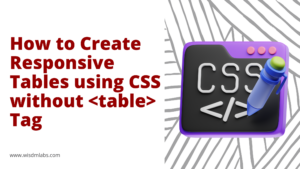This is a guest post by Amanda Brown. If you’d like to contribute to our blog, feel free to get in touch with us.
Getting Magento stores to appear higher on the search result lists is something which has a lot of steps involved, but is in itself quite an easy task. The first step is to optimize the site itself to be picked up by search results. The most technological knowledge that is needed is working knowledge of how to harness SEO to your advantage, but even that is easy to master with the basics.
SEO stands for Search Engine Optimization, and it directly refers to any attempts to improve the standing of a site or other form of online presence in search engine rankings. Google and other search engines rank sites in the results according to how relevant it finds them when looking at the keywords which are being used to initiate the search. SEO is a way of optimizing site content so that it appears more relevant than the other search possibilities.
#1 Power Of Content

Content is, of course, the most important consideration when it comes to SEO, as it makes up the bulk of any online presence. For online shops, this will fall to the product descriptions: make sure that the descriptions are fully informative (giving plenty of space for SEO enhancement), without dragging the overall feel and look of the site down. It is important to remember that meta-data is just as important as any other kind of SEO and should be fully filled in.
#2 URL
Best practice when it comes to Magento is to create URLs which do not have any codes attached to them. The best way to clean already existing codes is to use settings in the Magento platform to eliminate the codes which are attached. URLs with no codes are much friendlier to SEO.
Further to this, while still on the settings menu for SEO, try to find the server URL rewrites and set it to yes. This will remove the index.php from the end of any URL, making them even more SEO-friendly.
#3 Titles and Descriptions
For the best results, it is best to keep titles deliberately empty. If they are kept that way, when doing customization, the titles will become exactly what has been input before, without relying on the parent category. This will make the individual titles more visible to SEO, as they will more individualized.
The same is true of descriptions if they are to be optimized to the best of Magento’s abilities. Setting the meta-information for default values in store view allows for the page title and description to be overwritten, allowing more SEO-friendly content and descriptions.
#4 Getting Rid Of Duplicate Content
Websites that have duplicated content will not perform quite as well in SEO rankings as websites which have entirely original content throughout. The reason for this is that the duplicated content can confuse the SEO, which can mean that they will be left out of search results entirely.
For the best results make sure to go over all the content on the site (remembering images) several times to ensure that there is no duplicate content or as little as possible. While it might seem to be a good idea to use the same content for products which are the same, but separated by pages, I strongly advise you to NOT do this!! The duplicate content means that the website is not SEO optimized.
#5 Tag Structure
Tag structures are important for SEO because they are part of the way in which people navigate the site, as tags are used in all content and descriptions. As a general rule, use H1 tags for catalog names in the site, and H3 tags for specific product names. Using tags allows the SEO robots who run searches to understand the importance of what is being tagged.
#6 Keyword Usage
If Magento site users do not make use of their own specific keywords, then the platform will insert their own; unfortunately, these keywords are not optimized for SEO usage. Editing is possible through the use of the settings page – going through configurations, to design, and finally, to HTML will bring users to a place where they can edit the descriptive keywords to better fit with the SEO needs of the site.
#7 Optimizing Images
As well as content being optimized for SEO, pictures and videos should also be optimized. These parts of a site are often overlooked but are just as important for search rankings. File names are part of SEO, and so they should be named with care and attention towards the future.
#8 Robot.txt
Robot.txt is a small text file which is active on all websites and is used by search engines and their own robot files to find information. The default Magento template does have such a file, so users who want to take advantage of the SEO optimization it can offer should create their own.
#9 Extensions
Extensions are helpful for a Magento site which needs some extra help with SEO optimization, with three, in particular, being useful to site owners:
- Internal SEO Linking – this extension provides free SEO services to improve search engine rankings.
- SEO Pagination – this brings search robots to look at pagination issues logically, increasing SEO for each category.
- SEO Pack by GPMD – this extension improves on-page SEO through assigning custom robots to each task.
Conclusion
Moving a Magento store up the search engine rankings is an important task, especially considering that sites need to be on the first page to even have a chance of being seen (the paramount position is within the first five hits). This article shared several tips on how to increase SEO ratings, with the hope that some of the idea surrounding keywords and content optimization will be useful in bringing greater recognition in search engines.
Author Bio:
Amanda Brown is an eCommerce specialist at WillbeCoded with over 3 years of experience. Her specialties include eCommerce solutions, content marketing, and brand building. Amanda helps businesses improve their online presence and regularly shares information about it.










